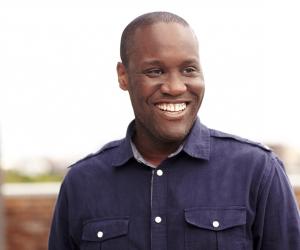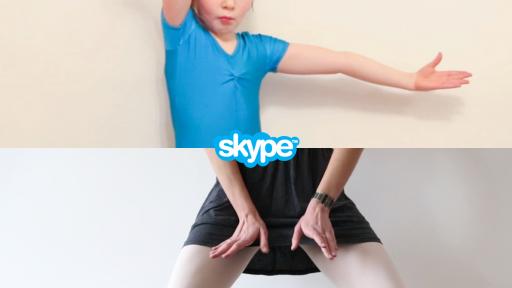Ije Nwokorie gets irritated by industry talk about branding in "its complete, finished, done state". More interesting than the end result as a perfectly executed application, he says, is "the mess that we create on a daily basis".
"If you look at our office and the nature of the interaction in our office – it is a mess. It is a messy place; the processes are messy," says Nwokorie. "And I think branding is increasingly a really kind of messy business."
He believes that the discipline of branding is going through a fundamental shift. Due to changes in technology and culture, branding is moving away from living at the intersection between corporate strategy (where the organisation wants to go) and communication (how the organisation talks about itself). It now lives at the interaction between corporate strategy and service and product innovation (the things the organisation makes).
“Increasingly, people’s perception of a brand is not what it says on a billboard far away or on a TV ad but in the products and service and experiences that people have,” Nwokorie states.
He explains why he likes to say, as dangerous as it is, that what they do at Wolff Olins is make a mess: “These two things matter to me at Wolff Olins: ‘Making’ because a brand is less about what you represent and more about what you do and ‘mess’, which I will talk about in five different ways.”
These are:
- The place where branding happens
- The process the agency goes through
- The products of branding
- People and the interaction between those people
- The problems that branding solves
“If we don't get involved in the messy parts of branding, if we continue to kind of talk about branding in its pure, refined complete state, I don't think we will continue to be valuable to our clients, and more importantly, we won’t be valuable to society.”
Place of branding
Showing images of the Wolff Olins London and New York offices that are pristine and “look great on the marketing material”, Nwokorie says these are in direct contrast to what creative spaces really are.
“People’s desks have to be able to be a manifestation of themselves and, increasingly in a world of hacking things together, it is a messy place to work."
More and more the agency's work involves physically going to the places where brands exist. Working in a similar fashion to service or product designers, agency staff observe people in the actual environment to understand how people encounter and use brands.
Recent work that Wolff Olins did for Skype, for example, is less about putting the brand on a pedestal than it is about the way people actually behave when they use Skype.
“It turns out the place where people experience the brand is almost as important, if not more important, than what the branding is - and capturing that is a powerful thing.”
The agency's process
What do you create in the branding process and how is this useful to people?
“Traditionally, the hero product of a branding agency is the brand guidelines or 'the brand bible' – this inert controlling mechanism for brands.”
Nwokorie believes that these guidelines don't work in a world where brands are made versus communicated. “If you think about the processes that matter to people - democracy, relationships, change - they are all very messy things. At Wolff Olins we are becoming increasingly comfortable that what we do in the branding process is not control but rather inject some inspiration... create some starting points for people to make stuff.”
Branding is not about creating the perfect elegant solution. "Actually, what you are doing is using design as an instigator or a distruptor to encourage people to break the norm; to do something different because that is what brands have to do.”
The products of branding
What are the products of a brand? Nwokorie says in the world of social media and accessible technology such as 3D printing, there are powerful, accessible "making" tools that people use every day.
“Increasingly, our first deliverable in branding is a product or a prototype that you are going to put in people's hands to learn from them," he says in reference to work they did with telecom brand Orange. "Often it serves as a forcing mechanism to give you some different perspectives.”
People and the interaction between those people
Wolff Olins is not in the business of creating branding superstars because the reality is that it takes so many people to create a successful brand. “It forces us to involve lots of people in the process, which sometimes looks amateurish but mostly is also messy.”
The agency views creating brands as an open and collaborative process.
Designing a new identity for Virgin Media, their approach was to debunk the rules and rather ask ‘what can you imagine with it?’ "If you have a brand that people can own and adopt, it moves you to a place where it can really be about possibilities, without a brand consultant having to be involved in everything,” he says. “It is about getting more and more people involved, not less and less. “
The problems that branding solves
There's a tendency to avoid messy problems in the branding process, Nwokorie observes. Instead, we should seek them out. “It is important to me as an African, as a Nigerian because we are surrounded by messy problems," he says.
He shares a personal story of how getting to primary school in rural Nigeria without getting hit by a bus or beat up by the school bully, required amazing creativity. “In Africa, creativity isn’t an option; you have to be creative to survive," he says.
Growing up in Africa you don't expect the system, whether it is the government or the police, to work in your favour, he relates. This is a good lesson for designers, too, who have to find a way to work around the system.
The problems in Africa we so frequently talk about are relevant the world over. “Systems everywhere are either not fit for purpose, corrupt or broken. Whether you are thinking about food or energy, money or health care, these systems are not working. I can’t think of a greater challenge for designers in the times we are living in than to use digital technologies and new kinds of creative tools to begin to help society think through those problems."
The Little Sun project is a case in point, an example of how a product aims to solve the problem of access to reliable energy.









